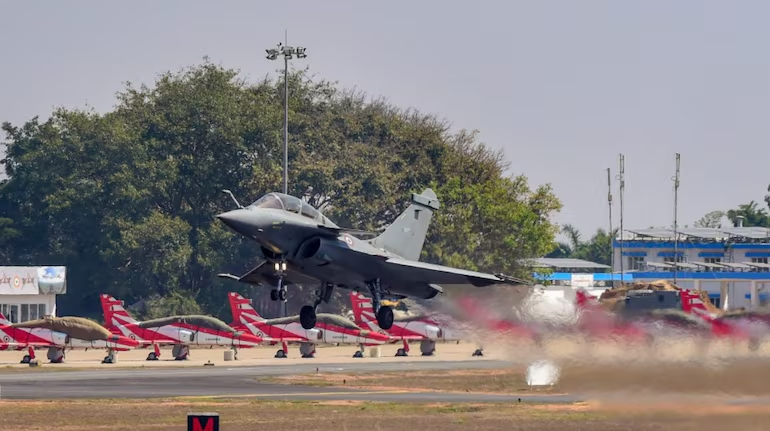India’s Rafale Expansion: IAF Pushes for 114 ‘Made in India’ Jets
- MGMMTeam

- Sep 13
- 3 min read
In a landmark development for India’s defence sector, the Indian Air Force (IAF) has formally submitted a proposal to the Ministry of Defence for the acquisition of 114 Rafale fighter jets. Unlike the earlier deals, this proposal envisions a strong “Make in India” push, with over 60 percent indigenous content, domestic manufacturing partnerships, and advanced maintenance facilities within India. If approved, this will become the largest defence procurement in India’s history, estimated at more than ₹2 lakh crore.

Building on Existing Strength
India already operates 36 Rafale jets in the IAF, while the Navy has recently placed an order for 26 naval variants. With this new procurement, India’s total Rafale fleet could rise to 176, cementing its position as one of the most advanced air forces in Asia. Defence officials note that the Statement of Case (SoC) for the deal is currently under review by the Ministry of Defence, Defence Finance, and the Defence Procurement Board, before it proceeds to the Defence Acquisition Council for final approval.
Indigenisation and Industrial Growth
The proposal is not just about strengthening the Air Force but also about enhancing India’s defence industrial base. Dassault Aviation, the French manufacturer of Rafales, is expected to collaborate with Indian aerospace firms to ensure large-scale local production. A major highlight of the plan is the establishment of a Maintenance, Repair, and Overhaul (MRO) facility for the Rafale’s M-88 engines in Hyderabad. This would drastically cut down on foreign dependency for upkeep and create thousands of jobs in India’s defence sector.
Additionally, the indigenous Rafales are expected to integrate longer-range air-to-ground missiles than the existing Scalp system, boosting India’s strike capability and enhancing its deterrence profile against hostile forces.
Strategic Necessity
The timing of the proposal is closely linked to the IAF’s operational requirements. With the retirement of the MiG-21 fleet and the gradual phasing out of Jaguars, Mirage-2000s, and MiG-29s, India’s squadron strength has been under pressure. Although the indigenous Tejas Mark-1A jets are being inducted and advanced projects like Tejas Mark-2 and AMCA are in development, the IAF faces a capability gap in the medium combat aircraft category. The Rafale, with its proven electronic warfare systems, long-range missiles, and versatility, is seen as the perfect fit to fill this gap.
Combat Record and Justification
The Rafale’s combat performance has already demonstrated its value in Indian operations. During “Operation Sindoor,” Rafales effectively countered Chinese-supplied PL-15 air-to-air missiles deployed by Pakistani forces. This success highlighted the strength of the Rafale’s Spectra electronic warfare suite, reinforcing the view that the platform provides a decisive edge in modern aerial combat. With increasing security challenges on both western and northern fronts, the expansion of the Rafale fleet is being justified as a matter of strategic urgency.
Economic and Geopolitical Implications
While the massive ₹2 lakh crore price tag places a significant burden on the defence budget, the investment carries long-term benefits. By anchoring production in India, the deal promises technology transfer, local employment, and a stronger domestic defence ecosystem. Moreover, it aligns perfectly with the government’s “Atmanirbhar Bharat” vision of reducing import dependency in critical defence systems.
Geopolitically, the move will be closely watched by both allies and adversaries. As China continues rapid military modernization and Pakistan seeks to expand its air force with Chinese and Turkish systems, India’s decision to strengthen its Rafale fleet is expected to shift regional power dynamics.
The MGMM Outlook
India’s decision to move forward with the proposal for 114 “Made in India” Rafale fighter jets reflects a historic moment in strengthening both national security and self-reliance. With over 60% indigenous content, this project directly supports the vision of Atmanirbhar Bharat, creating large-scale employment opportunities, enhancing local defence manufacturing, and reducing dependency on foreign powers for critical maintenance and technology. The addition of a dedicated MRO facility for Rafale engines in Hyderabad will further secure India’s defence autonomy while boosting industrial growth. This deal is not merely about expanding the Air Force—it is about empowering India’s defence ecosystem for decades to come.
At the same time, the Rafale fleet expansion addresses a crucial operational gap in the Indian Air Force. With the phasing out of MiG-21s and other aging jets, the Rafale stands as the best solution to strengthen India’s air dominance in the region. Its combat-tested record, especially during “Operation Sindoor” against Chinese-origin missiles used by Pakistan, proves its unmatched capability. In the face of rising threats from both China and Pakistan, this procurement demonstrates India’s preparedness and sends a strong geopolitical signal that the nation is determined to maintain strategic superiority in Asia while building strength through indigenous innovation.
(Sources: Moneycontrol, NDTV, OpIndia)




Comments